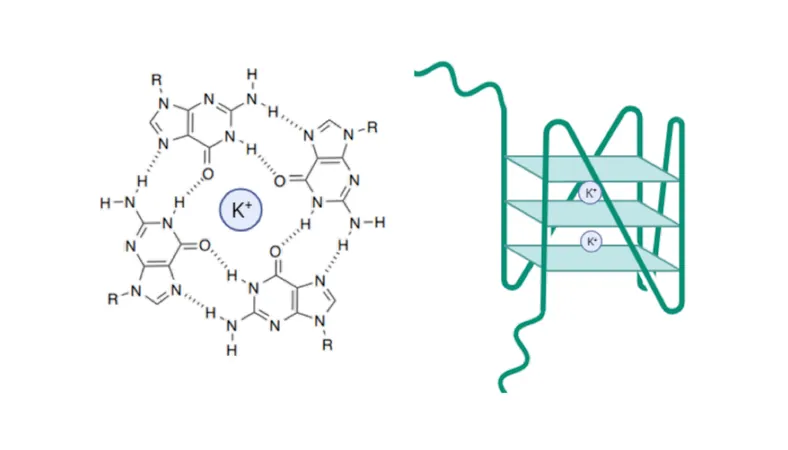
Unlocking the Secrets of G-Quadruplexes: How Archaea Could Change Our Understanding of DNA and RNA
2025-09-02
Author: Wei Ling
Exploring the Mysterious World of Archaea
In the vast realm of microorganisms, archaea stand out as fascinating entities, thriving in diverse and extreme environments—from the depths of oceans to the human microbiome. As the closest known relatives of complex life forms, these prokaryotes provide a unique lens through which scientists can explore the origins and functions of nucleic acid structures like G-quadruplexes (G4s).
What Are G-Quadruplexes and Why Do They Matter?
G-quadruplexes are intriguing DNA and RNA configurations that play crucial roles in regulating vital processes such as gene transcription and replication. While much is known about these structures in eukaryotic organisms, their existence and implications in archaea have remained largely elusive.
A Groundbreaking Discovery: G4s in Haloferax volcanii
Recent research has taken a significant leap forward with a comprehensive genome-wide analysis of the halophilic archaeon, Haloferax volcanii. Remarkably, scientists identified over 5,800 potential sequences that can form G4s. Subsequent biophysical experiments confirmed that many of these sequences can indeed adopt stable G4 structures in laboratory settings.
Visualizing G-Quadruplexes in Action
Utilizing state-of-the-art G4 detection tools and super-resolution microscopy, researchers captured stunning images of G4 formations within H. volcanii’s DNA and RNA during varying growth phases. This groundbreaking visualization marks a significant advancement in our understanding of these complex structures.
Cross-Comparing with Other Archaea: The Case of Thermococcus barophilus
Further validation came from studies on another archaeon, Thermococcus barophilus, where similar G4 structures were detected. This cross-comparison strengthens the argument that G4s might play a vital role across various archaeal species.
Understanding the Role of Enzymes in G4 Resolution
To delve deeper into the functionality of these structures, researchers employed helicase-deficient strains of H. volcanii. This experiment revealed potential enzymes responsible for resolving G4s, providing insights into how these unusual structures might be managed within the cell.
A New Frontier in Archaeal Research
These pioneering findings position Haloferax volcanii as an essential model organism for studying G4 biology. As scientists continue to unravel the complexities of archaea, the implications for our understanding of life’s evolutionary history and the fundamental processes governing nucleic acids grow ever more profound.
Conclusion: The Impact on Astrobiology and Genomics
As we delve into the world of archaea and G-quadruplexes, we not only further our comprehension of molecular biology but also explore exciting possibilities in fields such as astrobiology and genomics. Who knows what other secrets these resilient microorganisms might hold?

 Brasil (PT)
Brasil (PT)
 Canada (EN)
Canada (EN)
 Chile (ES)
Chile (ES)
 Česko (CS)
Česko (CS)
 대한민국 (KO)
대한민국 (KO)
 España (ES)
España (ES)
 France (FR)
France (FR)
 Hong Kong (EN)
Hong Kong (EN)
 Italia (IT)
Italia (IT)
 日本 (JA)
日本 (JA)
 Magyarország (HU)
Magyarország (HU)
 Norge (NO)
Norge (NO)
 Polska (PL)
Polska (PL)
 Schweiz (DE)
Schweiz (DE)
 Singapore (EN)
Singapore (EN)
 Sverige (SV)
Sverige (SV)
 Suomi (FI)
Suomi (FI)
 Türkiye (TR)
Türkiye (TR)
 الإمارات العربية المتحدة (AR)
الإمارات العربية المتحدة (AR)